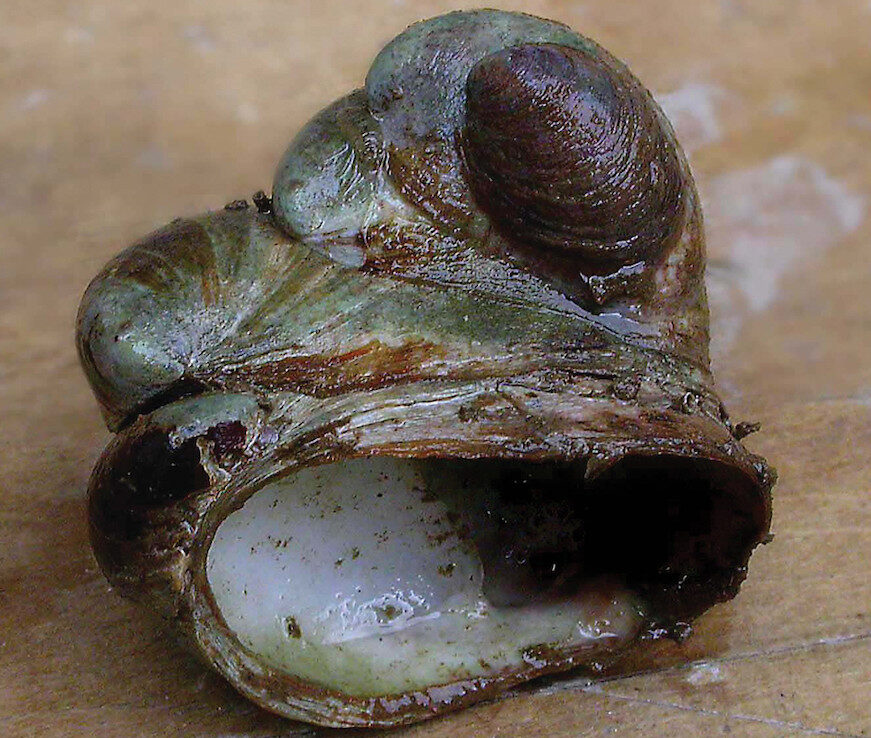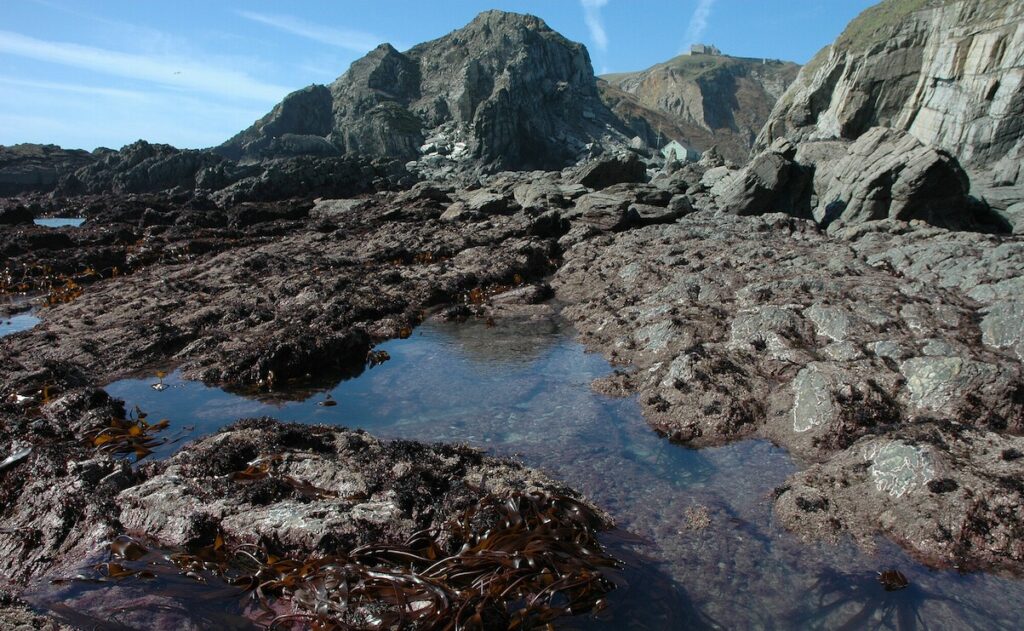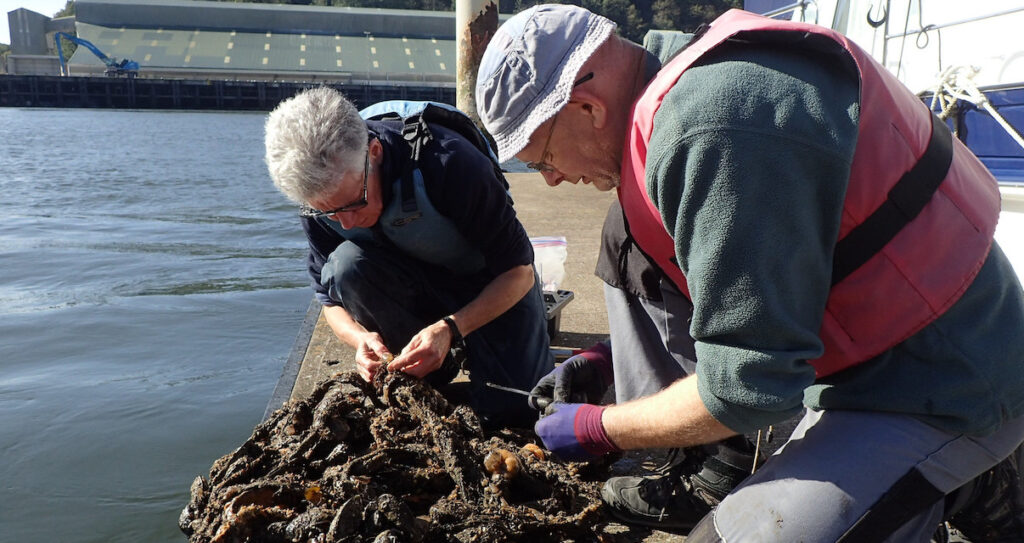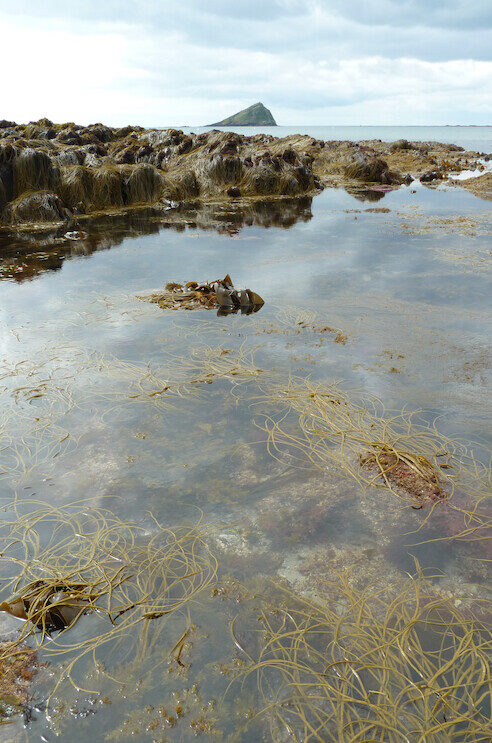
Spotting, monitoring and reporting non-native marine invaders is crucial for the protection and conservation of native ecosystems. Searching the coastline and rockpools for invasive species is an essential part of gathering useful data and protecting marine ecosystems. Here’s how to get involved.
Become a citizen scientist to help manage invasive species spread
Non-native species can outcompete, predate on, or introduce disease to native plants and animals, often leading to biodiversity loss.
By recording and reporting sightings of invasive species, you can help to create a detailed, real-time map of their distribution and spread, which is key for effective management and control. Citizen science initiatives, such as tracking invasives through platforms such as the iNaturalist app, or participating in local surveys, empower individuals to contribute to conservation efforts.
Early detection of invasive species allows for a rapid response, preventing or reducing the impact of an invasive species on ecosystems, agriculture, and local economies. Sightings can also be reported to DASSH enquiries by emailing dassh.enquiries@mba.ac.uk.

c. Keith Hiscock Marine Biological Association
Where to go locally to find them
The coastline and rockpools are biodiversity hotspots, home to a variety of native species, but also vulnerable to the spread of non-native invaders. By carefully observing and recording species found in rockpools, you can help to identify and track the presence of invasive species that might outcompete native organisms or disrupt local ecosystems. Resources and guides are available to help to identify common species, including key invasive ones to look out for in our Guide to non-native species which you can download here.
How to record sightings using iNaturalist
To record sightings using iNaturalist, go to the iNaturalist website to download the app or create an account. Once you are logged in, simply click on the “Observe” button to start a new observation. You can either upload photos of the species you have encountered or manually enter details such as species name, location, and date.
iNaturalist uses GPS to automatically record the location if you are using the app, but you can also adjust it manually if needed. After submitting your observation, the iNaturalist community and experts can help with species identification, and your data will be added to global biodiversity records! It’s a great way to contribute to citizen science, especially for tracking invasive species and other wildlife in your area.
Introduction to DASSH: Gateway to marine biodiversity data
The UK Archive for Marine Species and Habitats Data (DASSH) is a Data Archive Centre hosted by the Marine Biological Association. It is MEDIN and Core Trust Seal accredited, and holds the marine biodiversity data for the UK.
DASSH aims to provide researchers, conservationists, policymakers, and any data users with openly accessible, high-quality, standardised marine datasets, supporting scientific studies and decision-making for the protection and management of marine environments.
Through its comprehensive data collection, DASSH contributes to advancing marine science and fostering collaboration within the global marine research community.

Monitoring non-native species in a local marina c. Marine Biological Association
Using DASSH: How to search and submit invasive species records/data
To search for species records using the DASSH Mapper, simply navigate to the Mapper tool on the DASSH website. Once there, you can enter specific search criteria, such as geographical location, species type, biotope, survey name, originator, and owner, to refine your search. The interactive map allows you to zoom in on specific areas.
Once your criteria are set, the DASSH Mapper will display relevant data points on the map, which you can click on for more detailed information and access to downloadable datasets for further analysis. To search for whole surveys, you can go to the MEDIN Discovery Metadata Portal and search by a range of criteria including survey name, geographic location. Where data are openly accessible, a download link is available in each metadata record.
DASSH supports a variety of electronic data types and file formats, with submission options including email, file transfer, or post (using appropriate media). Once submitted, DASSH will archive, perform quality assurance, and publish marine biodiversity data and metadata, as well as assign a DOI, free of charge, provided the data adheres to the MEDIN Guideline format, found under the Biodiversity section here. For ad-hoc species sightings you can also send these to us at dassh.enquiries@mba.ac.uk, along with the coordinates, date, and a clear photograph of the species that you wish to submit a record of, and the team will submit this to iRecord on your behalf.
DASSH has created a data-focused Citizen Science Best Practice guidance tool, found here. This collates best practices from over 60 sources into a guide aimed to support the users and creators of citizen science data to produce high quality, FAIR (Findable, Accessible, Interoperable, Reusable) data, structured around the stages of the data lifecycle. It includes helpful recommendations and checklists as well as case studies from existing citizen science initiatives.
Citizen science in action: The Rock Pool Project

The Rock Pool Project is a community-based initiative dedicated to connecting people with marine wildlife through citizen science. The Big Rock Pool Challenge engages communities via rock pooling events to explore and record marine biodiversity along the southwest coastline. This project is particularly valuable for monitoring invasive species, as it encourages participants to identify and document a wide range of species, including non-natives. By sharing this data with organisations such as the MBA and Natural England, the project contributes to a broader understanding of invasive species distributions and their impact on local ecosystems.
Through hands-on activities and community involvement, The Rock Pool Project plays a key role in raising awareness fostering proactive conservation efforts against invasive species. During Invasive Species Week, take part in the Big Rock Pool Challenge: National BioBlitz – a flexible, week-long adventure to explore, document, and help protect marine life with a focus on invasive species.
Invasive species webinar 20 May
Join Dr Nova Mieszkowska, MBA Senior Research Fellow and principal investigator for the Marine Biodiversity & Climate Change Project (MarClim) on Tuesday 20 May for the webinar How Invasive Species Are Reshaping Our Shores. Nova will cover how, where, when, and why do invasive species colonise our intertidal habitats, and what are the results for native species? Book your free tickets here.
Become a MBA Member Today – Save 25% with Code: Ocean25
- Offer valid from 7- 31 May 2025 (Monthly payments only)
- Join here.
Your membership:
- Supports globally significant pioneering marine research tackling the climate and biodiversity crisis.
- Funds vital marine conservation efforts in UK and international waters.
- Develops our existing presence in marine policy, working closely with organisations across the globe to meet the challenge of oceanic sustainability.
MBA Membership gives you access to your own personalised MBA members online area, exclusive publications including the quarterly Marine Biologist magazine, the National Marine Biological Library collections and facilities, jobs and careers information, discounts on events, access to bursaries and more.
Join us – Become a MBA Member today.